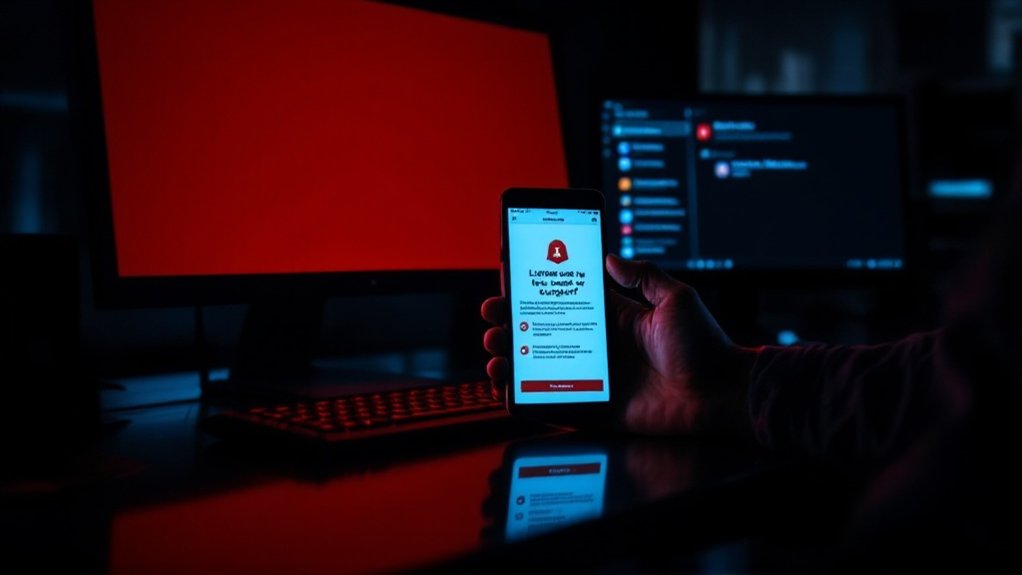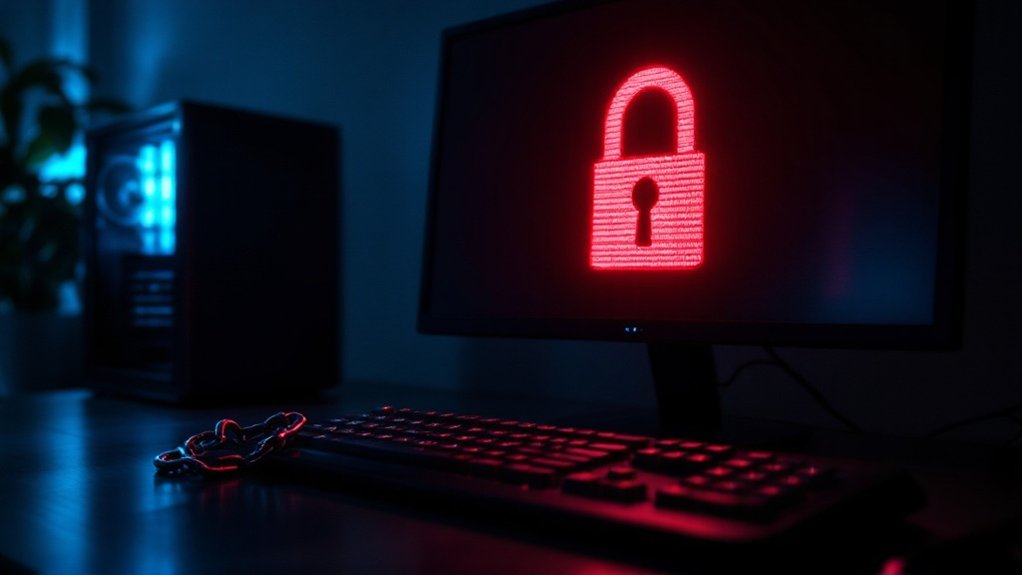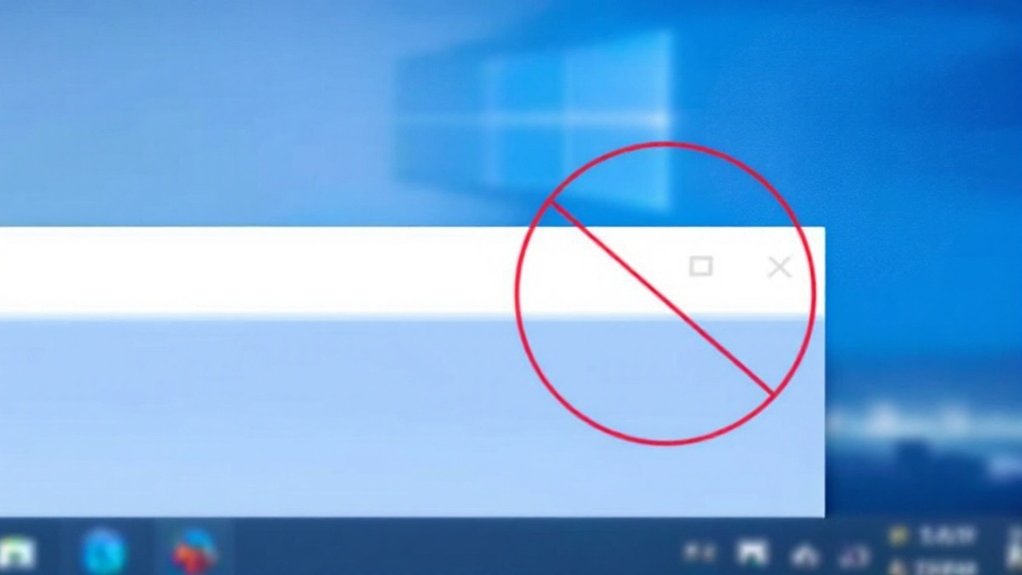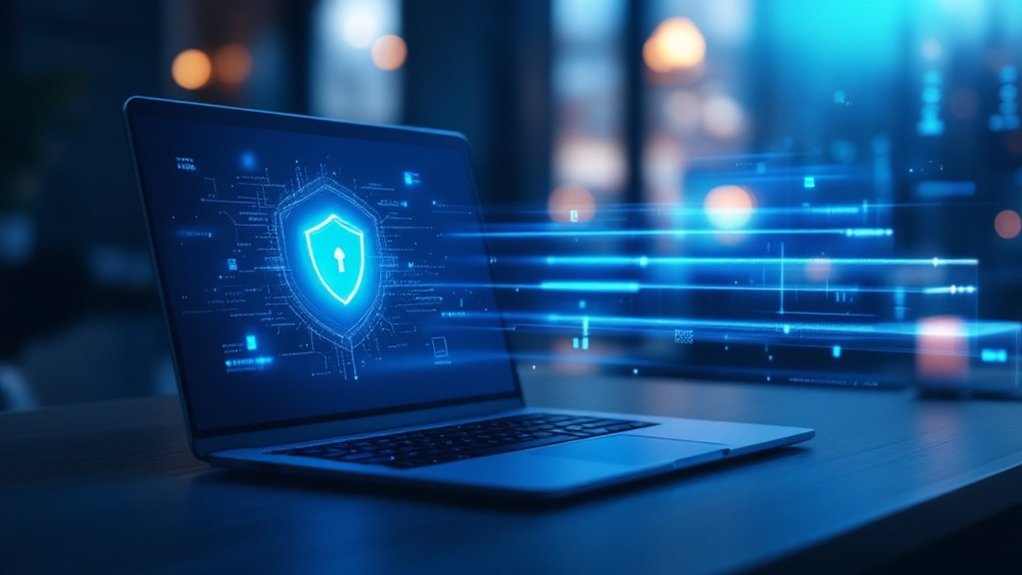To unlock a computer compromised by a tech support scammer, users should first close the affected browser through Task Manager (Ctrl+Shift+Esc) and end the associated processes. Immediate steps include examining and removing suspicious browser extensions, conducting malware scans in Safe Mode, and utilizing recovery codes if Lock My PC software is involved. Installing reputable antivirus software and ad-blockers prevents future attacks, whereas understanding common scam tactics provides crucial protection against sophisticated cybercriminal schemes.

When cybercriminals deploy fraudulent tactics to lock users out of their computers, victims need a clear, systematic approach to regain control of their systems. Common indicators of these scams include pop-up messages displaying fake error codes like “DT00X02,” warnings about spyware or viruses, and urgent demands to contact technical support. These deceptive tactics often incorporate threats of data loss or identity theft to create panic and manipulate users into compliance. Recovery codes are typically generated by the scammers’ software to create an illusion of legitimacy.
Cyber scammers use fear tactics and fake warnings to manipulate victims, making a systematic recovery approach essential for regaining control.
The first vital step in addressing this situation is to maintain composure and avoid engaging with the scammer’s demands. Microsoft and other legitimate technology companies never remotely lock computers or demand immediate payment for services. Users should focus on closing the compromised browser, which can be accomplished through the Task Manager by pressing Ctrl+Shift+Esc and selecting “End task” for the browser process. The Task Manager access may become limited due to restrictions imposed by malicious software.
Following browser closure, users should examine their system for suspicious browser extensions, particularly focusing on recently installed add-ons or plugins that may have facilitated the attack. Common culprits include mp3 converters and reward-based extensions, which should be swiftly removed through the browser’s settings menu. Implementing real-time detection through McAfee can help identify and block malicious extensions before they cause harm.
For more persistent issues, Safe Mode activation provides a secure environment for malware scanning and removal. In cases where Lock My PC software is involved, users can enter the code ‘999901111’ at the prompt to initiate the recovery process. This generates a recovery code that, when entered on the official Lock My PC recovery page, provides an unlock password to restore system access.
After regaining control, immediate uninstallation of the malicious program is fundamental. To prevent future incidents, implementation of thorough security measures is vital. This includes installing reputable antivirus software like TotalAV, utilizing ad-blockers such as uBlock Origin or Ghostery, and maintaining current system updates. Regular software patches and updates serve as key defense mechanisms against evolving cyber threats.
Furthermore, users should remain vigilant about unsolicited technical support calls and familiarize themselves with common scam tactics to maintain long-term system security.
Frequently Asked Questions
How Can I Prevent Scammers From Accessing My Computer in the Future?
Preventing unauthorized computer access requires implementing multiple security layers.
Users should install reputable antivirus software with real-time protection, activate automatic updates, and maintain strong, unique passwords.
Additional measures include using two-factor authentication, encrypting sensitive data, and activating firewalls.
Regular system updates, careful screening of downloads, and avoiding suspicious links further strengthen defense against potential intrusions.
Web activity should be restricted to verified, secure sites.
Will My Personal Information Remain Safe After a Scammer Locks My Computer?
Personal information security after a computer lockdown by scammers depends on several critical factors.
Data exposure risks include potential access to passwords, financial details, and sensitive files through malware or keyloggers.
During most data typically remains intact after lockouts, immediate protective measures are crucial, including changing all passwords, enabling two-factor authentication, and running extensive security scans.
Professional cybersecurity examination can determine the full extent of data compromise.
Should I Pay the Ransom to Unlock My Computer?
Paying ransom to cybercriminals is strongly discouraged by cybersecurity experts and law enforcement agencies.
Statistics show that 34% of victims globally who paid ransoms never received decryption keys, whereas 64% in the US faced repeated attacks after payment.
The FBI explicitly advises against ransom payments, as they fuel criminal enterprises and provide no guarantee of data recovery.
Alternative solutions include system restoration, antivirus scans, and utilizing free decryption tools.
Can Antivirus Software Detect and Prevent Computer-Locking Scams?
Modern antivirus software employs multiple layers of protection against computer-locking scams, including behavioral analysis, heuristic scanning, and real-time monitoring.
Although these tools can detect and block many ransomware variants, they cannot guarantee complete protection against zero-day attacks and sophisticated social engineering tactics.
Studies indicate that up-to-date antivirus software prevents approximately 85% of ransomware attempts, making it a crucial but not infallible defense against computer-locking schemes.
How Do Scammers Typically Gain Access to Lock Computers Remotely?
Scammers mainly gain remote computer access through social engineering tactics and malicious software deployment. They often impersonate technical support representatives, convincing victims to install legitimate remote access tools like TeamViewer or LogMeIn.
Furthermore, they distribute malware through phishing emails, compromised websites, and drive-by downloads, which can grant unauthorized system control. Some perpetrators exploit software vulnerabilities or employ remote access trojans (RATs) to bypass security measures.









